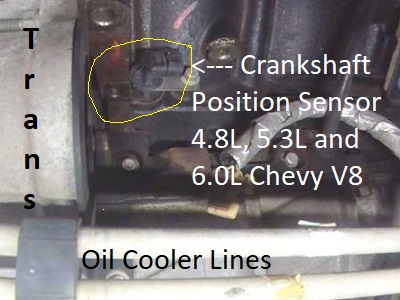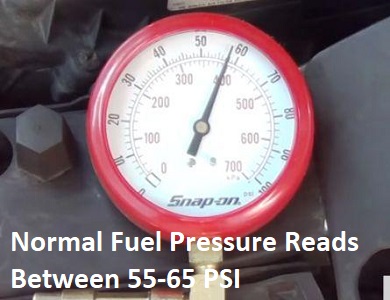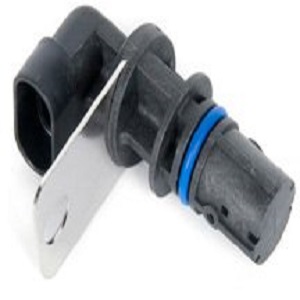Chevy Engine Crankshaft Position Sensor
If you experience the Chevy engine crankshaft position sensor problem, it's important to remember two things. First, the symptoms can closely mimic those of a failing fuel pump.
To further complicate this issue the Chevrolet fuel pump isn't known for its reliability on these trucks either. The second point to make touches on a common problem with the coolant temperature sender.
When the engine temperature sensor fails it displays similar symptoms as with engine crankshaft position sensor failure. The important thing is to get the diagnosis correct to avoid replacing good parts.
Quick Links: New ACDelco Engine Crankshaft Position Sensor Parts.
In this article we'll discuss the specific symptoms and diagnostic procedures associated with a V8 Chevy engine crankshaft position sensor failure.
This computer monitored sensor remains difficult to diagnose, because when the crank sensor first starts to fail, the problem remains intermittent. Often it will not set a check engine light code.
This is one of those rare situations where a constantly monitored computer controlled sensor can fail without setting a specific diagnostic trouble code for the failure of that component.
 Crank Sensor with the Starter Removed
Crank Sensor with the Starter RemovedBad Crankshaft Position Sensor Symptoms
When the crankshaft position sensor completely fails the engine won't start. However, at the beginning of this type of failure, drivers complain about symptoms of intermittent stalling with difficulty in restarting the engine.
In fact, car owners often describe the stalling and starting problems associated with higher engine temperatures.
In other words, as the engine reaches normal operating temperature, stalling and hard starting increase. In addition, drivers talk about how the engine will restart if it's allowed to cool.
This sets the Chevy crankshaft position sensor failure apart from other problems. Coming across a defective engine management sensor isn't uncommon on any year, make or model automobile.
What remains unlikely about any computer sensor failure becomes its ability to heal itself during a cool down period.
As mentioned above the intermittent failure of this sensor can happen so quickly that the computer doesn't recognize or set a diagnostic trouble code for the issue.
With that said, two other common problems with the Chevrolet V-8 engine can cause engine stalling and starting issues on V-8 powered cars and trucks.
This includes the 4.8 L, 5.3 L and the 6.0 L V-8 General Motors engines. Of course, we're talking about the in tank fuel pump failure and problems with the coolant temperature sensor on these engines.
No Start from Bad Chevy Fuel Pump
 Universal Fuel Pressure Tester
Universal Fuel Pressure TesterWhen you have a bad crankshaft position sensor on a Chevy truck the stalling and difficulty restarting the engine becomes closely related to engine temperature.
On the other hand, when you have a stalling and no start conditions from a defective fuel pump, engine temperature has no role in the frequency or severity of the symptoms.
With that said, the symptoms are so similar between a crankshaft position sensor failure and a fuel pump problem that we'll talk about a quick and simple test on your Chevrolet V-8 engine.
When you have a failed crankshaft position sensor, fuel pressure at the test port on the fuel rail reads in the 55 PSI or above range.
In the scenario of a no start condition due to a Chevy fuel pump failure you find zero PSI at the fuel pressure tap on the fuel rail during a crank, but won't start situation.
General Motors locates the fuel pressure tap on a Chevrolet V-8 engine under a plastic Schrader valve cap on the passenger side of the intake manifold.
Performing a quick fuel pump pressure test becomes the perfect way to distinguish the crank no start situation caused by the lack of fuel rather than a lack of spark.
Since fuel pump problems on Chevy trucks remain a common situation the purchase of a $20 fuel pressure tester provides an excellent investment for owners.
After connecting the test gauge to a cold engine, you simply cycle the key on and the fuel pump should run for two seconds. This short run time should pressurize the entire fuel system to 55 to 65 psi.
Note that the exact amount of fuel pressure depends on the year, make and model. With that said, it takes at least 50 PSI to properly fire the Vortec fuel injectors.
Bad Chevy Engine Crankshaft Position Sensor
 Chevy Engine Crankshaft Sensor
Chevy Engine Crankshaft SensorWhen you're Chevy engine crankshaft position sensor goes bad it will eventually set a diagnostic trouble code in the P0335 through P0339 range.
The way to nail down a Chevy engine crankshaft position sensor failure is to use a scan tool.
I'm not talking about an expensive dealership level diagnostic tool. I'm talking about a simple $30 scanner that has the capability to read the live data stream and take snapshots.
When the crankshaft position sensor causes the engine to stall or not to start, you will find zero cranking RPMs on the scan tools data stream.
In other words, when you pull up the crank sensor information on the
scanner and crank the engine around, the sensor itself reads zero.
It should show a variable number from 500 to 800 cranking RPM. If you have an old Chevrolet truck and you plan on getting a few more years out of it, an automotive scan tool becomes almost a necessity.
These check engine light codes point vehicle owners in the right direction. On a final note, let me quickly talk about the uniqueness of the failure of the crank position sensor on the Chevrolet pickup trucks.
When the part cools, it seems to heal itself. This makes finding the malfunction difficult unless you know what you're looking for. Find out what else we cover on this website on the fix my old ride homepage.
Author bio : Mark is a retired ASE certified master technician, Chevrolet Professional Service Council member and the founder of FixMyOldRide.com. Watch the video on the about Mark the mechanic page to see his credentials. Mark hand writes all of the articles on FixMyOldRide.com unless indicated otherwise.